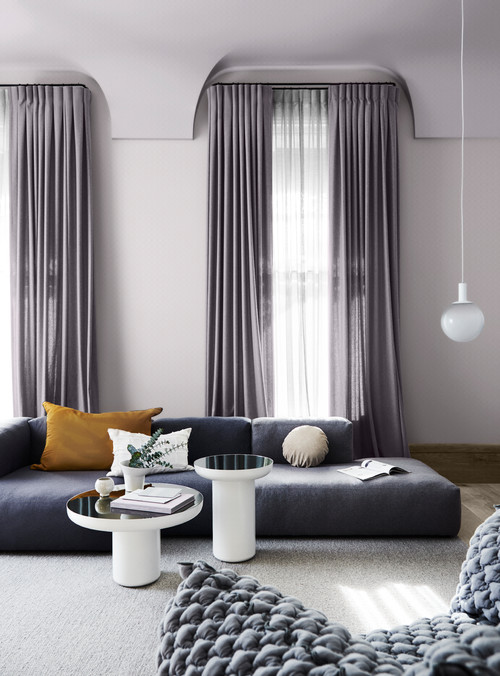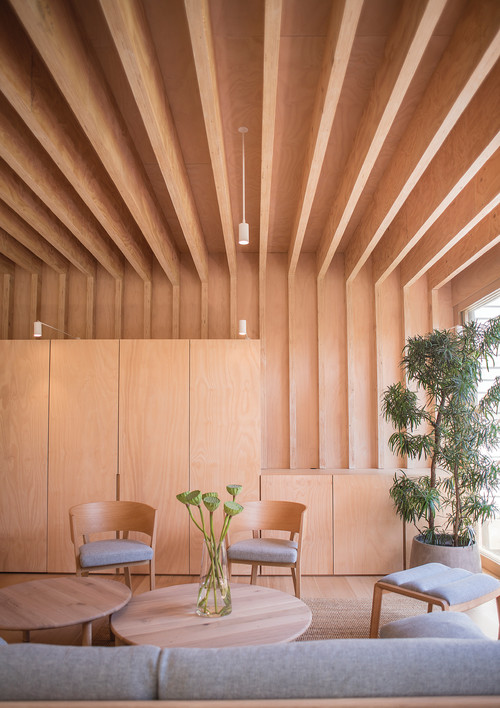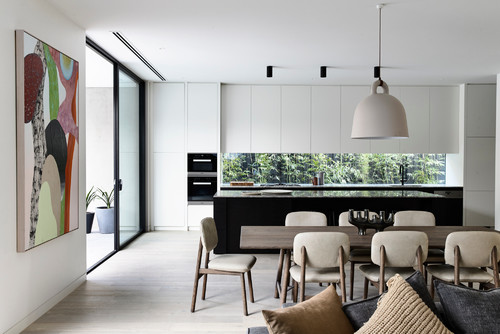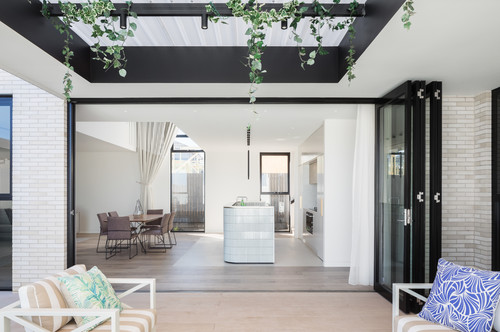Feeling frazzled? The interior design world has a cure for that – get set for interiors that are all about balance and calm.
Feng shui, home gyms, mindfulness corners… when it comes to health-related home trends, you’d be forgiven for thinking we’ve seen it all. Not so. Enter the wellness movement; a new interior design ethos that aims to calm a ragged mind and inspire creative thinking through soothing colour and material choices. We spoke to three interior design professionals to learn more.

Photo by Dulux Paint – Discover living room design ideas
Where has the wellness interior design trend sprung from?
“Health and wellness is a huge focus for 2019,” says Andrea Lucena-Orr, Dulux colour and communications manager. “And they are such important issues in today’s fast-paced world. Many of us are stressed and stretched, and never switch off. As a result, we’re looking for ways to relax and gain balance in our lives.
“The wellness trend is about calm, soothing colours and tonal balance rather than heavy contrast,” says Lucena-Orr. “The colours also tend to be on the warmer side to encourage a personal touch and retreat-like feel in the home.”
Connection and community are also key themes within this design movement, says Eugene Cheah, co-director of Cheah Saw Architecture. “The wellness trend brings the focus of architecture and interior design back to a simpler, more immediate, intimate and people-centric view, with more focus on lifestyle,” he says.
The trend is backed up by neuroscientists who have discovered special cells in our brains’ hippocampus that are attuned to the geometry and organisation of space – including architectural environments. In spaces that our brains perceive as stressful, behavioural psychologists have also seen our heart and respiratory rates rise and our adrenals release the ‘stress’ hormones, cortisol and adrenaline.
What are the key decorative elements of the wellness interior design movement?
- Natural materials.
- Timber – not just on floors but on walls and ceilings too.
- Soft, soothing colours.
- Spaces that connect to nature.
- Furniture with curves.
- Indoor plants.
Get some helpful tips on how to display indoor plants

Photo by Cheah Saw Architecture

And architectural features?
From his professional experience, Roger Borland, director at Canny architectural firm, suggests trying to incorporate the following architectural features:
- Generous entrances and hallways that open onto courtyards or gardens and create a feeling of calm from the moment you step inside the front door.
- Wider-than-average hallways that borrow light, air and floor area from adjoining sitting rooms or studies. This spatial sharing helps visually remove corridors that can sometimes be conceived as dark and unattractive.

- Open-plan kitchen/dining/living rooms that can be zoned off with full-height sliding doors (while providing each zone with its own outdoor access) or left as one big, open space.
- A large master suite that’s all about relaxation, with sheer fabric and blockout blinds to control different light levels.
- A fully integrated walk-in-wardrobe suite and luxurious ensuite that allow a home’s inhabitants to use the spaces together or separately.

Photo by Brickworks Building Products
Does it really work – will it relax me?
Borland believes it will. “These principles have been evident for thousands of years – think of the Roman bath houses that were designed for relaxation. Plus, there have been many studies on how space affects the human mindset,” he says.
“The geometry of space goes beyond just function; when the right mix of geometry, light, shadow, ventilation and materiality is achieved, it changes how we feel. This is the joy of good architecture and interior design.”
How can I add a touch of wellness to my interior design?
“Create a sanctuary within your home, such as a quiet corner where there’s no television or computer and you can completely switch off,” says Lucena-Orr.
“Add in curved furniture, which has a relaxing and comforting feel. Choose soothing colours or a tonal palette of one hue in different shades that you can use throughout a room; then add in plenty of greenery to purify the air and create a connection to nature.”

By Dulux Paint
Photo by Brickworks Building Products
Georgia Madden Senior writer, Houzz Australia
Styling by Bree Leech
Images by Lisa Cohen
Do you have a question on the local Real Estate market, or should you spend money on your home before you sell, just call Matt Wineera on 0274 951 536 who is always on hand to answer your query.
Check out our Value Plus Real Estate Selling Commission which saves you lots of money when you sell your home with Matt.
Work with Matt Wineera who lists and sells in the Tauranga, Mount Maunganui and Papamoa areas for Reality Realty.





